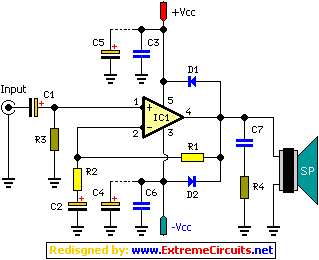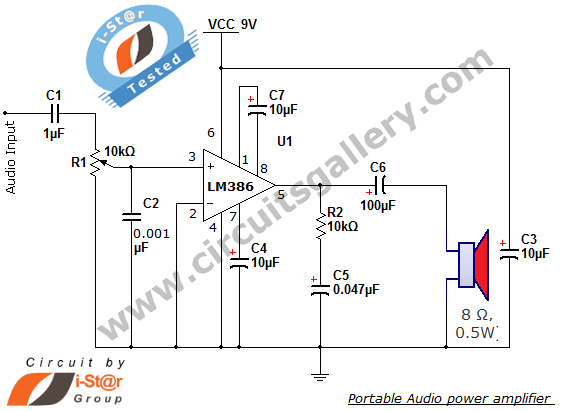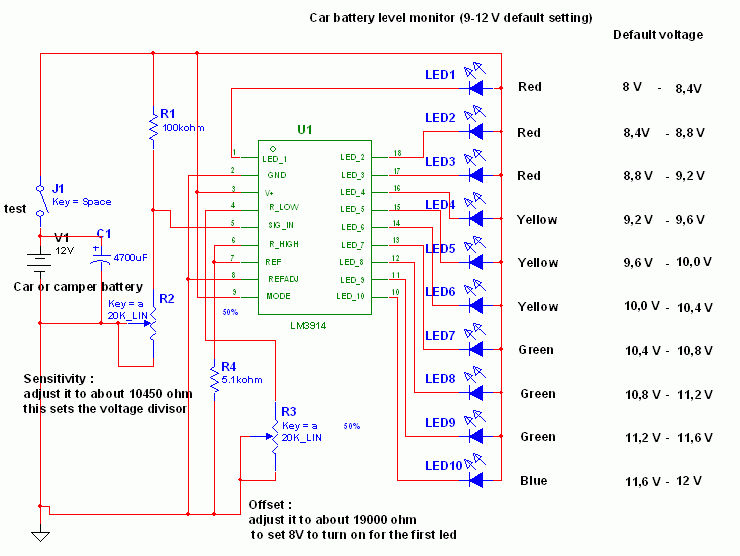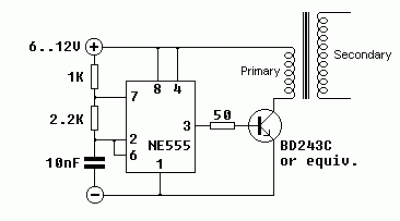
Silicon photocell remote control circuit
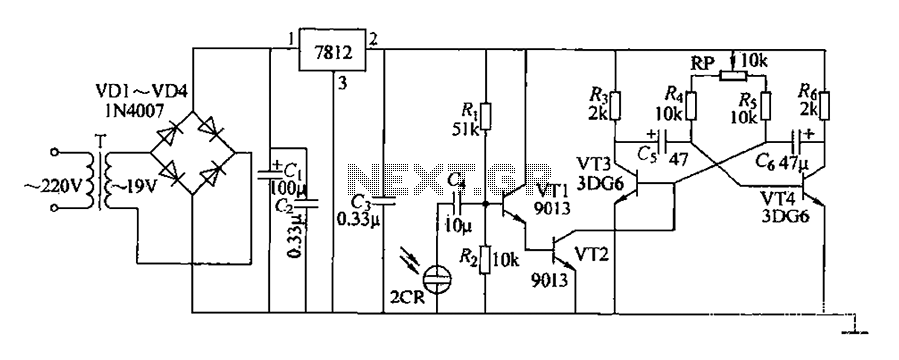
220V AC voltage is transformed by transformer T to 19V. After passing through a full-wave bridge rectifier and filter capacitor C, the voltage is regulated to DC using a 7812 voltage regulator. When the battery indicator light is illuminated, the circuit operates in a monostable or bistable state, altering the operational state of the circuit to either connect or disconnect the electrical load. This configuration also triggers a thyristor control switch for lighting or household appliances.
The circuit begins with the primary input of 220V AC, which is stepped down to 19V AC by transformer T. This transformer is essential in ensuring that the voltage level is safe and suitable for the subsequent rectification process. Following the transformer, the AC voltage is converted to pulsating DC using a full-wave bridge rectifier, which consists of four diodes arranged in a bridge configuration. This rectification process allows both halves of the AC waveform to contribute to the output, resulting in a smoother DC voltage.
The output from the bridge rectifier is then smoothed out by a filter capacitor, denoted as C. This capacitor serves to reduce the ripple voltage, providing a more stable DC output. The filtered voltage is then fed into a 7812 voltage regulator, which is designed to output a consistent 12V DC. This regulator is crucial for powering sensitive electronic components that require a stable voltage for proper operation.
The circuit incorporates a battery indicator light, which serves as a visual cue that the system is operational. When this light is illuminated, it signifies that the circuit is in a monostable or bistable state. In a monostable configuration, the circuit can toggle between a stable state and a temporary active state. Conversely, in a bistable configuration, the circuit can maintain two stable states, allowing for more complex control mechanisms.
The operational state of the circuit can change, allowing it to connect or disconnect the electrical load path. This is typically achieved through a thyristor, which acts as a switch that can be turned on or off to control the power delivered to lighting or household appliances. The thyristor is triggered based on the circuit's state, enabling efficient control over the connected load, thereby enhancing the overall functionality of the system. This arrangement provides a robust solution for managing electrical loads in various applications, ensuring both safety and reliability.220V AC voltage through the transformer T transformer is 19V, after full-wave bridge rectifier, filter capacitor c], terminal regulator blocks 7812 after regulators into DC vol tage. When the battery light is lit the monostable state or bistable circuit flip. Changing the operating state of the circuit, to connect or disconnect the electrical load path, or thyristor trigger circuit is turned on, the control switch lighting or household appliances.
The circuit begins with the primary input of 220V AC, which is stepped down to 19V AC by transformer T. This transformer is essential in ensuring that the voltage level is safe and suitable for the subsequent rectification process. Following the transformer, the AC voltage is converted to pulsating DC using a full-wave bridge rectifier, which consists of four diodes arranged in a bridge configuration. This rectification process allows both halves of the AC waveform to contribute to the output, resulting in a smoother DC voltage.
The output from the bridge rectifier is then smoothed out by a filter capacitor, denoted as C. This capacitor serves to reduce the ripple voltage, providing a more stable DC output. The filtered voltage is then fed into a 7812 voltage regulator, which is designed to output a consistent 12V DC. This regulator is crucial for powering sensitive electronic components that require a stable voltage for proper operation.
The circuit incorporates a battery indicator light, which serves as a visual cue that the system is operational. When this light is illuminated, it signifies that the circuit is in a monostable or bistable state. In a monostable configuration, the circuit can toggle between a stable state and a temporary active state. Conversely, in a bistable configuration, the circuit can maintain two stable states, allowing for more complex control mechanisms.
The operational state of the circuit can change, allowing it to connect or disconnect the electrical load path. This is typically achieved through a thyristor, which acts as a switch that can be turned on or off to control the power delivered to lighting or household appliances. The thyristor is triggered based on the circuit's state, enabling efficient control over the connected load, thereby enhancing the overall functionality of the system. This arrangement provides a robust solution for managing electrical loads in various applications, ensuring both safety and reliability.220V AC voltage through the transformer T transformer is 19V, after full-wave bridge rectifier, filter capacitor c], terminal regulator blocks 7812 after regulators into DC vol tage. When the battery light is lit the monostable state or bistable circuit flip. Changing the operating state of the circuit, to connect or disconnect the electrical load path, or thyristor trigger circuit is turned on, the control switch lighting or household appliances.
